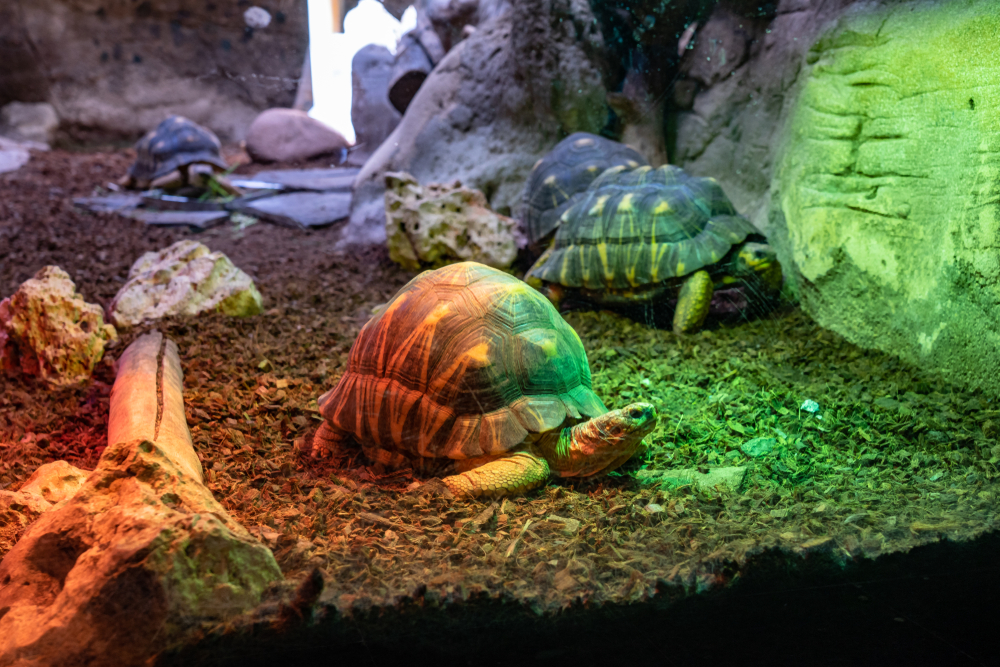The Ultimate Guide to Turtles and Tortoises
The Ultimate Guide to Turtles and Tortoises
Whether you're wooed by their adorable dinosaur-like faces or the unique shells they call home, turtles are cute! These gentle creatures are often first-time reptile pets for children and adults alike, thanks to popular cartoon characters.
Just like a more common pet cat or dog, turtles need proper care to live their best lives. Here's what you need to know about choosing a turtle, creating a great habitat, and keeping your pet healthy.
In this guide, we'll explore:
1. What's the Difference Between a Turtle and a Tortoise?2. How Long Do Turtles and Tortoises Live?
3. Best Pet Turtles and Tortoises for Beginners
4. Turtle Aquariums and Tortoise Terrariums: Creating a Home for Your Reptile
5. What Do Turtles and Tortoises Eat? Meals and Supplements
6. How Do I Handle a Pet Turtle or Tortoise?
7. Ongoing Care for Your Turtle or Tortoise
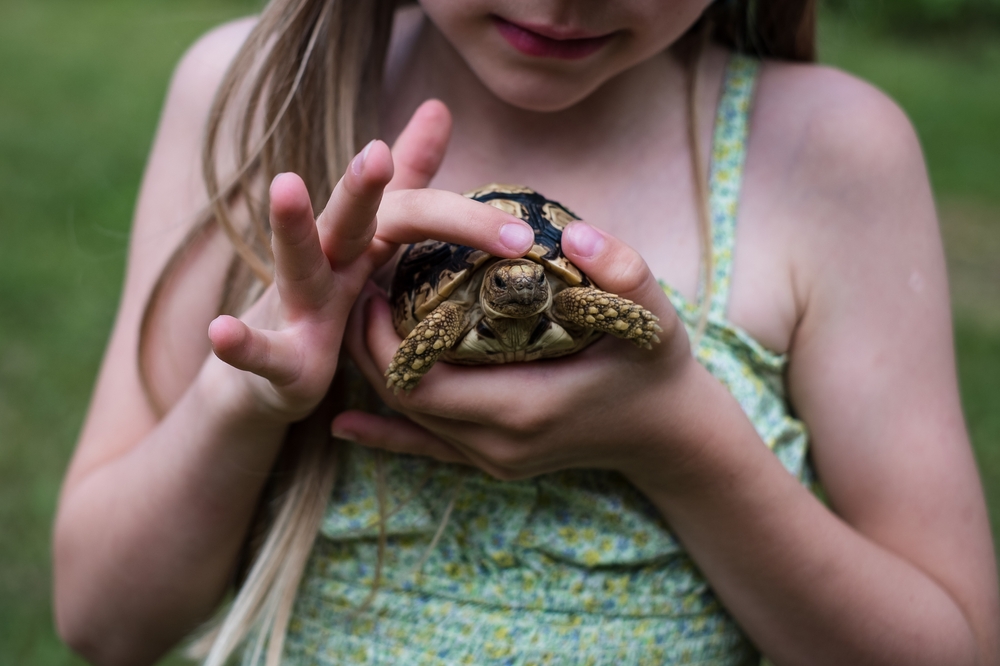
What's the Difference Between a Turtle and a Tortoise?
First things first, are turtles and tortoises the same thing? Nope. But, they are in the same class of animals, Reptilia, more commonly known as reptiles.
Reptiles are cold-blooded animals with scales and a three-chambered heart. Turtles and tortoises are in the order Testudines and are commonly referred to as Chelonians. Every living species in this group, and some extinct species, has a bone or cartilage shell. Turtles are one of the oldest groups of reptiles and appeared before snakes and even crocodiles.
There are three groups of animals in the Chelonian order: turtles, terrapins, and tortoises.
Since we don't commonly refer to these animals by their scientific names, we'll refer to terrapins and sea turtles as turtles and tortoises as tortoises or land turtles for the remainder of this article.
So how are turtles and tortoises the same? Both turtles and tortoises have shells that protect them from predators and beaked mouths to help cut up veggies or prey.
While they have many similarities, they also have many differences. Tortoises are mainly vegetarian and live on land, while turtles are mainly omnivorous and spend most of their time in the water. Terrapins live mainly in coastal regions and spend some time on land. They have the same webbed feet as their aquatic cousins, while tortoises' feet resemble a tiny version of an elephant's foot. Box turtles are the exception to the "turtle rule." Their feet are more webbed than turtle feet but not as webbed as tortoise feet.
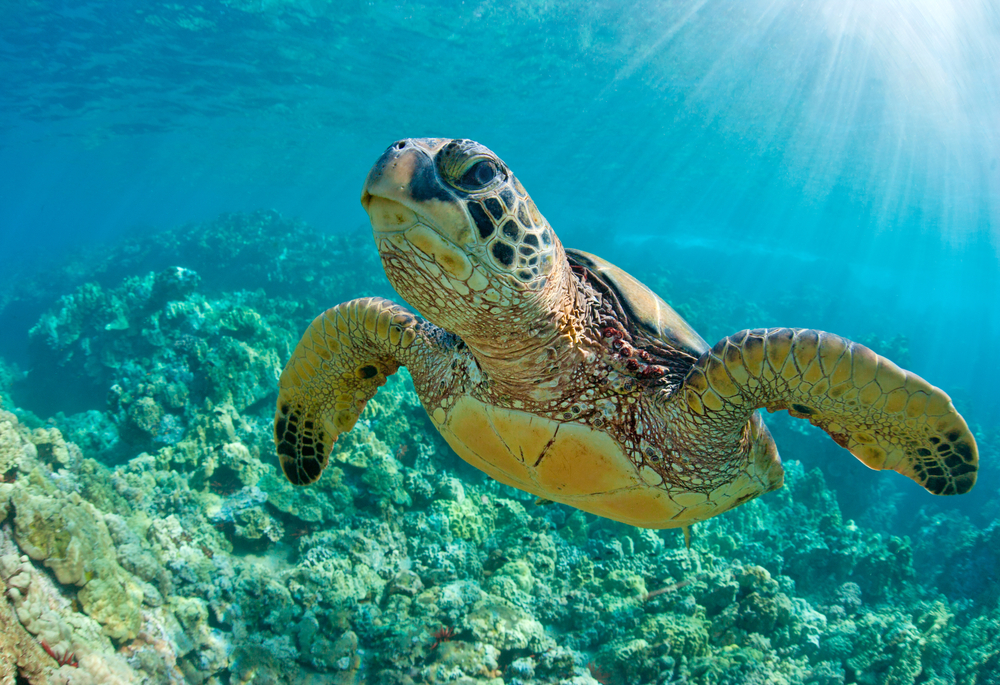
Turtles
Today, "turtle" is commonly used to refer to any living creature with a shell. More commonly, turtles are Chelonians that live nearly all of their lives in water, usually only coming onto land to lay their eggs. They have flippers, or webbed feet, and are known for their incredible journeys through the oceans of the world over thousands of miles just to return to the beach where they were born to lay their eggs.
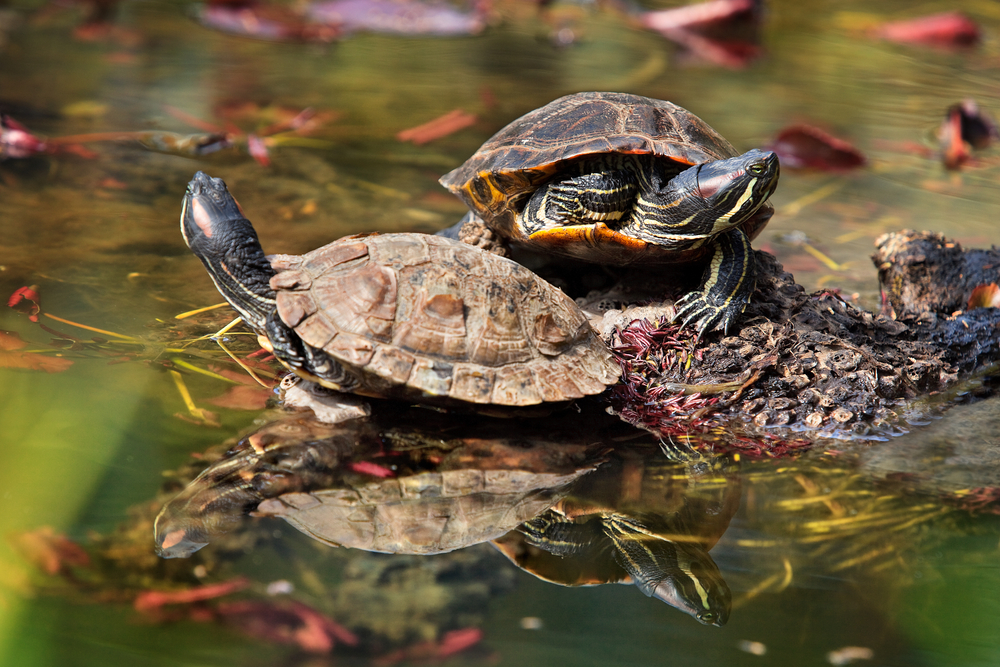
Terrapins
Terrapins used to refer to every turtle that lived in the water. It's now used to refer specifically to the diamondback terrapin (but not exclusively). Terrapins live near coastal, brackish water and are semi-aquatic. They spend more time on land than their fully aquatic cousins.
Fun fact: "Terrapin" was most commonly used in the UK and the USA as a generic term for turtles until the latter part of the 20th century.
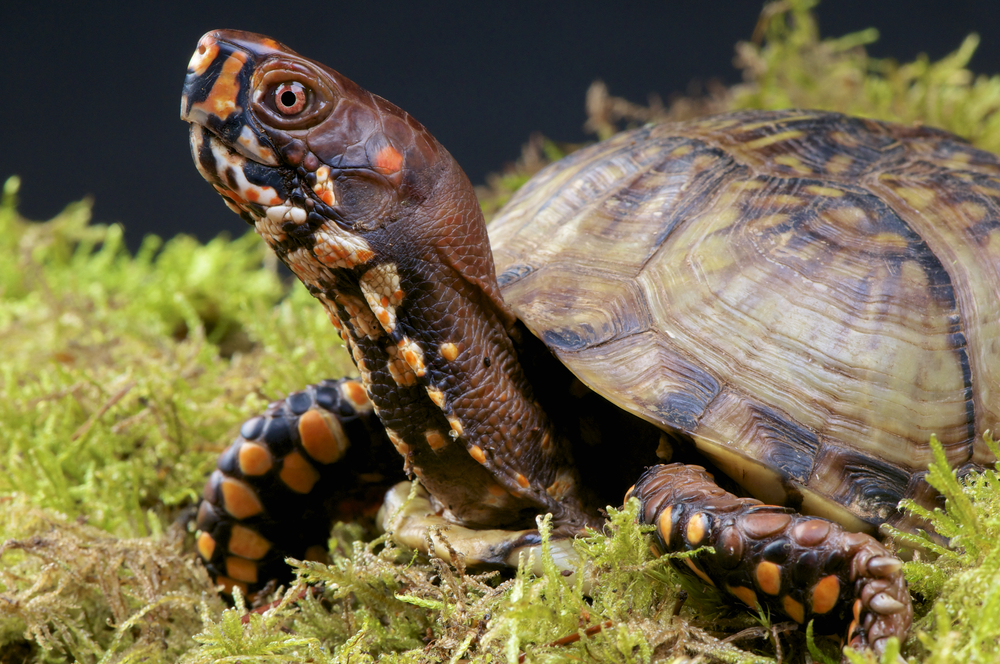
Tortoises
Tortoises spend all their time on land and don't have flippers or webbed feet. Both tortoises and terrapins also have pretty limited home ranges where they live, and they don't travel very far throughout the year.
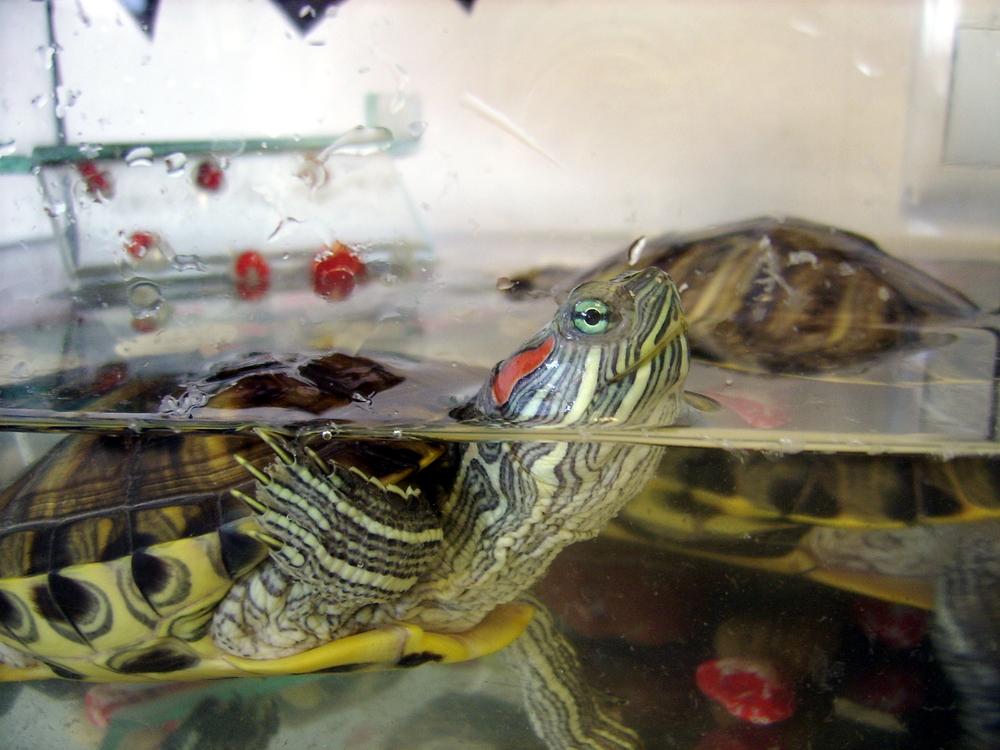
How Long Do Turtles and Tortoises Live?
Owning a pet turtle or tortoise is a big commitment. So, before getting a pet turtle or tortoise, it's important to remember they can live for many decades. Especially tortoises — it's quite possible they'll outlive you!
Some turtles and tortoises can live for 20, 30, 50, or even 100 years! For example, the red-footed tortoise commonly celebrates an 80th birthday. And slider turtles (including the red-eared slider, Cumberland slider, and yellow-bellied slider) usually live 40 years.
Research the species you have in mind before purchasing to make sure you are prepared for its needs and lifespan. Also, check local and state regulations where you live. Some communities have restrictions on reptile pets.

Best Pet Turtles and Tortoises for Beginners
There are 461 turtle and tortoise species, and they come in all sizes, from giant leatherback sea turtles that can get over 7 feet long and weigh over 1,500 pounds to the speckled tortoise that only gets 4 inches long and weighs up to 5.8 ounces.
As you browse pet stores and reptile swaps for your next pet, keep an eye open for the breeds of turtles and tortoises listed below. They tend to be very personable and socialize with humans quickly.
And if you're thinking about picking out your new pet from the wild, don't! They don't make good pets. Leave wild turtles and tortoises alone so they can thrive in their natural habitat and maintain a balanced local ecosystem.
Pet Turtles
- African side-neck turtle
- Asian box turtle
- Diamondback terrapin
- Map turtle
- Mud turtle
- Musk turtle
- Painted turtle
- Reeve's turtle
- Softshell turtle
- Spotted turtle
Pet Tortoises
- Greek tortoise
- Russian tortoise
- Marginated tortoise
- Hermann's tortoise
- Leopard tortoise
- Pancake tortoise
- Red-foot tortoise
- Star tortoise
Of course, these are just a few of our favorites. You will likely see other breeds popular in your area for sale. Ask lots of questions about their care needs, lifespan and temperament, and soon you will fall in love with a specific type of turtle or tortoise.
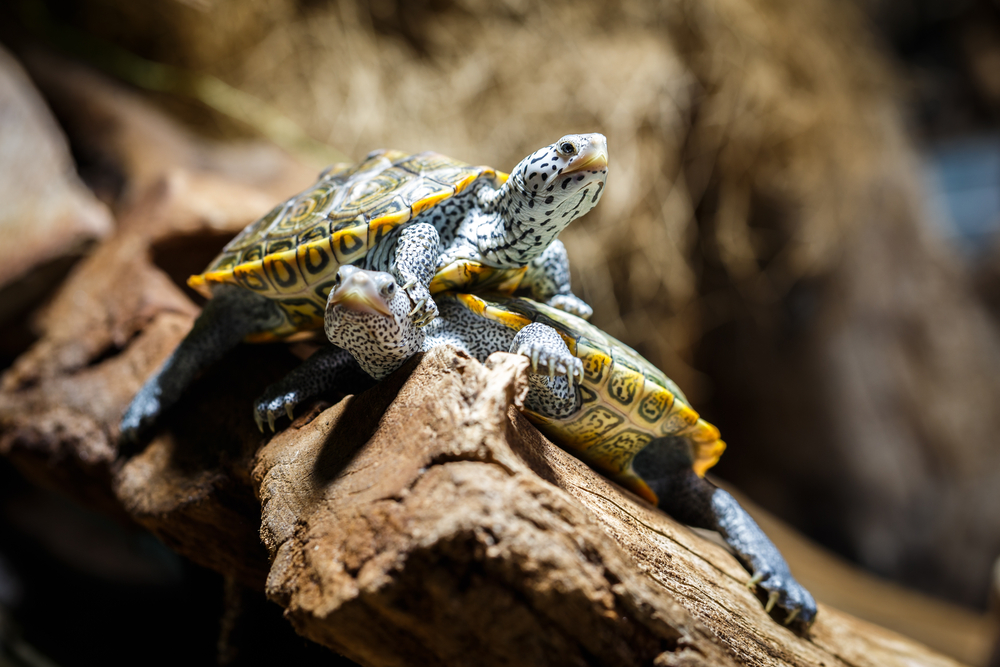
Turtle Aquariums and Tortoise Terrariums: Creating a Home for Your Reptile
Be sure you have a cozy reptile habitat ready to go before you bring your new pet home. For a turtle, you want an aquarium that can hold water. Tortoises need a terrarium setup offering land and a soaking bowl of water. Here's what you need to know about these habitats, lighting requirements, heat/humidity needs, decorations, and substrate.
Habitat
Turtles need a sturdy, escape-proof enclosure with plenty of room to swim and grow. Your turtle's habitat should provide the equivalent of at least 10 gallons of space per inch of anticipated adult shell length, so they have lots of room to swim and a place to bask. For example, an American mud turtle can grow to 6" in length and would require a tank no smaller than 60 gallons in volume.
Turtles can be messy (they eat and poop in their water!), so a high-capacity filter and regular water changes using a water conditioner are essential to maintaining proper water quality. Ideally, the filter should be rated for two to three times the amount of water your turtle will be kept in. So, if you have a baby turtle in a 20-gallon aquarium, use a filter rated for 40-60 gallons to keep the water clean.
Tortoises and land turtles need a longer rather than taller enclosure with plenty of room to move around and grow. Some tortoises grow quite large, requiring custom-built habitats or outdoor enclosures.
Cleaning
The easiest way to keep a tortoise's habitat clean and free of waste is to pick up after your pet. Each time your pet goes to the bathroom, leaves behind some food, or you find a dead cricket, make sure to remove it and throw it away as soon as possible. In a humid environment, these can grow many types of bacteria and fungi that aren't good for your pet. The longer it's left in the terrarium, the higher the chances are your pet will crawl over it and touch those pathogens.
You can use your gloved hands or a Zilla Corner Litter Scoop to remove it. And be sure to remove all the waste and the bedding around and under it. This is your best chance to remove any urine that may have soaked into the bedding. Once removed, replace it with a handful of clean bedding. If the waste is stuck to a piece of decor, remove the decor and wash it with hot water, then put it back in its spot.
Clean up the habitat every day, and make sure to wash your hands immediately and not touch anything after removing the waste.
While removing waste will help keep your pet's habitat from smelling and reduce the potential for harmful pathogens, it still leaves behind small bits of waste. Many animals that burrow can also leave waste under the substrate where you may not see it. To keep waste from building up, break down and sanitize the enclosure every two to three months.
The best way to clean the enclosure is with clean hot water, and if you want to use a cleaning product, stick to dish soap and elbow grease. Once cleaned off, you can sanitize your decor and terrarium with a 10% bleach/90% water solution, then rinse with hot water and allow to dry.
For turtles living in aquariums filled with water, use this Aquarium Cleaning Checklist as a guide when it's time to sanitize the tank. Remember to change those filters, scrub down any algae growth, and vacuum the gravel in the bottom of the tank to lift away waste.
10 Steps to a Clean Tank
- Unplug the filter and heater.
- You'll need to replace about 25% of the water in the aquarium to keep it fresh. Set out a pitcher with fresh water that equals about the amount you'll remove. Add turtle-safe water conditioner, and allow it to acclimate, so it'll be about the same temperature as the water in the aquarium when it's time to add the fresh water.
- Clean the algae off of the glass with an algae scraper or algae pad.
- While the scrubbed algae is settling to the bottom, remove the disposable filter cartridge and toss it in the garbage. Replace with a fresh filter cartridge.
- Remove the impeller (part of the filter) from the filter and clean it with a rag or paper towel. If there's a lot of calcium scale on the magnet that holds the impeller in place, soak it in vinegar for an hour or two before rinsing and replacing it.
- Remove the heater and clean it. If there is any calcium scale over the heating element, soak in vinegar to dissolve it away.
- Using your gravel vacuum, remove 25% of the water in the aquarium. The siphon will now be able to suck up the loose algae that has settled to the bottom.
- After you've removed the water, add your prepped water from step 2 to the aquarium. (Be sure the fresh water is similar in temp to the remaining aquarium water before adding.)
- Plug the filter and heater back in.
- Clean the outside of the aquarium with an aquarium-safe glass cleaner that's non-toxic, fragrance-free, and leaves no residue.
Lighting & Heating
Turtles and tortoises require UVA/UVB lighting, which is essential to maintaining proper healthy shells, scales, and bones. They also need a heat source — like heat bulbs, mats, aquatic heaters, or ceramic heat emitters — to maintain the correct air and/or water temperature for the species. (Note: Aquatic turtle aquarium heaters should have a protective guard, so your pet doesn't nibble on the wire.) They will also need cool areas in their tanks so the animals can self-regulate their body temperatures.
Lighting and heating are important for all living creatures, both physically and psychologically. Why? The sun partially dictates how reptiles and other living things (including you!) go about your day. Sunlight not only helps you feel warm and happy, but it also provides necessary vitamins.
Light and heat fixtures dictate the circadian rhythm (12 hours turned on, 12 hours turned off), or internal body clock, which helps your pet know when to eat and sleep. Without a proper circadian rhythm, your pet will experience increased stress, and their body will respond negatively. Tortoises, especially, like it warm. Use a heat lamp to maintain the correct temperature for the species you keep, and provide a temperature gradient, meaning a cool area and a warm area for your tortoise.
To help with the process, we have a Lighting & Heating Guide and a Habitat Guide, which lists various heating, lighting, and humidity requirements for 35 common pet reptiles.
Light
Reptiles and amphibians need both UVB and UVA light to live healthy lifestyles. These are both types of ultraviolet (UV) light. Each type of light has a different role in keeping your pet happy and healthy. The UV spectrum is broken into three parts: UVA, UVB, and UVC. All three of these types of light are found in natural sunlight.
- UVA light helps regulate behaviors such as feeding, daytime movement, mating and similar activities.
- UVB light allows the synthesis of vitamin D3, which helps to absorb calcium.
- UVC light is used for sterilization (kills bacteria). It can be very dangerous to you and your pet turtle in high doses.
UV wavelengths are filtered by glass and plastic. To get the most out of your UVA and UVB bulbs, be sure they have direct exposure to the habitat and pet by securing them to the wire mesh lid of your terrarium and angle the bulbs straight down. Since UV output will diminish over time, plan to replace the bulbs every 3,500 hours (about once a year).
Heat
Make sure the habitat's humidity levels are correct. Be sure to give your tortoises or land turtles different areas with varied humidity by adding moistened peat moss to the substrate and a bowl of water for soaking and adding humidity to the air. Keep a humidity and temperature gauge or a thermometer-hygrometer to make sure you're maintaining the proper temperature and humidity levels for your pet. For turtles, clean their tank and change the water often to avoid problems from too much bacteria.
Do you live in an area with a variable climate? When the weather gets colder, it's important to ensure the changing climate outside doesn't affect your climate inside. Reptiles depend heavily on their environment. For many, a drop in temperature or humidity levels can lead to sickness, shedding issues, and even a decrease in energy.
If your house gets colder as the seasons change, your standard bulbs might not provide adequate heat for your terrarium. In fact, you may want to consider upgrading your light source to something with a higher wattage to keep your terrarium temperature at the appropriate level. Even if your house temperature stays the same, it's still a good idea to check if your UV bulbs need to be changed. Remember, the UV will run out in approximately three years even if they are still giving off light.
If necessary, consider adding extra heat sources to your enclosure. Just be careful not to overheat your animal, and don't expose your pet to a heat source that may burn them.
Each reptile has their own specific needs, and it's up to you to help them meet those needs. It's best to research types of lighting and heating that fit the particular terrarium you'd like to build.
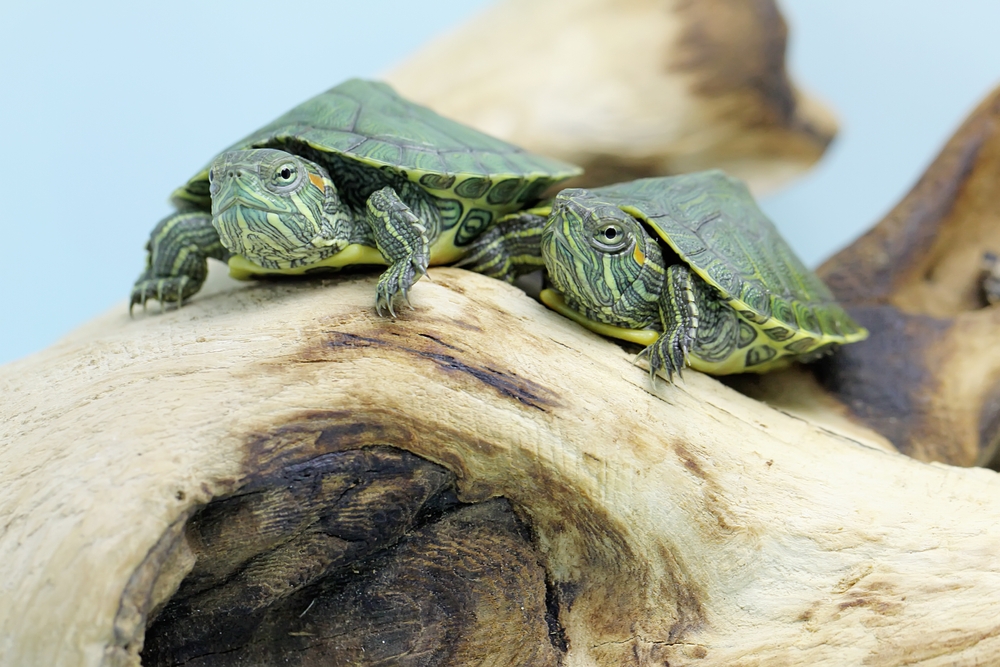
Decor
Just as you need furniture in your home, turtles need a basking platform above the water. Why? They love to suntan under their heat lamp, of course! In addition to soaking up the warmth, close access to the heat helps them regulate their metabolism and digestion.
You can also decorate their tank with ornamental live or faux plants, rocks, and novelty aquarium decor.
Tortoises need decor that mimics their life in the wild. Create areas that helps them hide, dig, and tunnel. Rocks, driftwood, and other decorations work well and create additional basking, hiding, and feeding places.
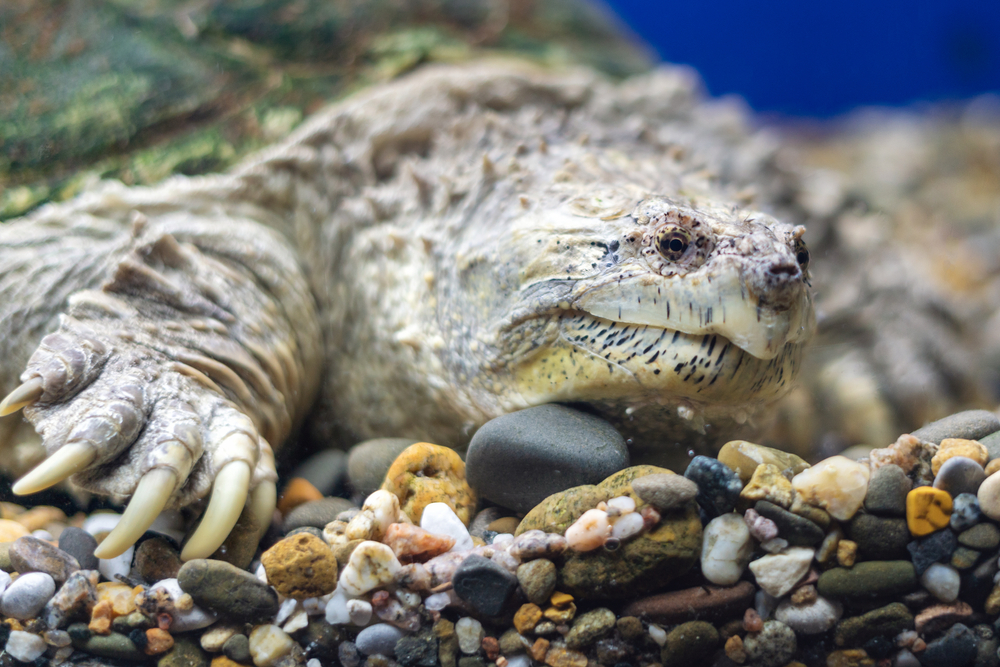
Substrate (Bedding)
For turtles living in water, aquarium gravel, pebbles, rock, or other water-safe substrate works best. An inch or two of bedding on the bottom of the tank is perfect for adding visual interest to the habitat and hiding waste as it filters down through the water.
Substrate for tortoises should be non-toxic and allow your pet to burrow. Some top choices include wood bark blends, coconut husk, desert blends, jungle mixes, and moss. For more information, check out the Zilla Bedding Guide.
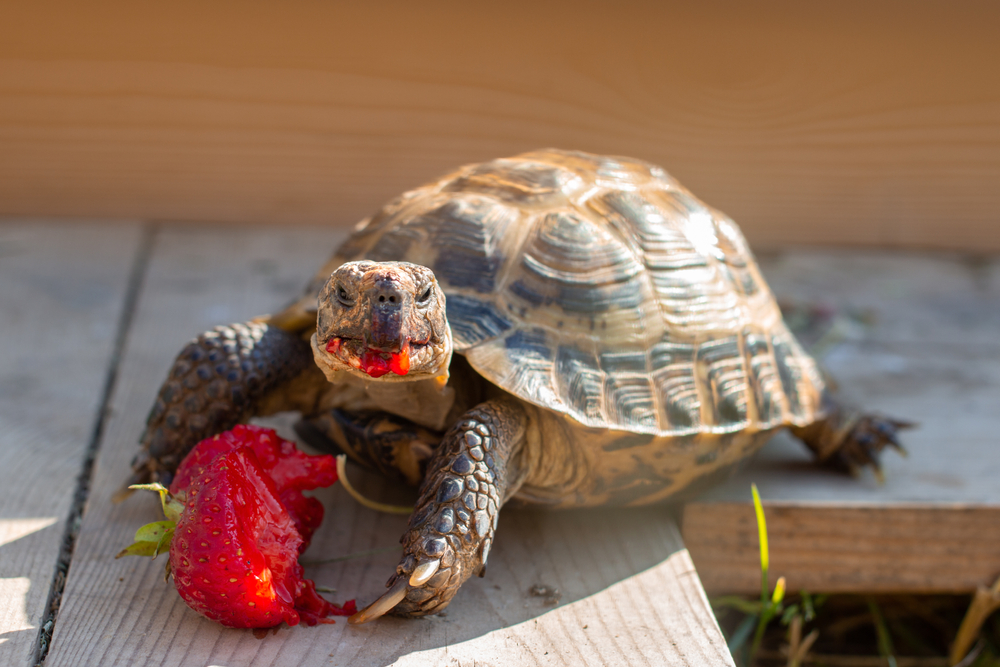
What Do Turtles and Tortoises Eat? Meals and Supplements
In the wild, reptiles scavenge a wide variety of foods. In captivity, the options for food are much more limited based on what is commercially available and easy to find.
Turtles are typically omnivorous but can be carnivorous. They spend a lot of time in the water, and their diet reflects that. They enjoy small fish, frogs, crustaceans, and insects. They also enjoy turtle pellets, leafy greens, bananas, berries, and other fruits and veggies.
Tortoises are largely herbivorous and enjoy a variety of grasses, veggies, fruit flowers, and other plant matter. Avoid iceberg lettuce as it lacks nutrition. Always make sure all food is cleaned with a quick rinse in the sink and pesticide-free, so your pet doesn't get sick.
Regardless of which pet turtle (or tortoise) you choose, research your new pet's dietary needs to ensure you're giving your dino buddy the proper nutrition they need to thrive.
Your pet will need calcium and Vitamin D3 to ensure their bones stay healthy and do not weaken. (Note: If you don't have a UVB bulb in your terrarium, use a calcium supplement with D3. If you do have a UVB bulb, be sure the calcium you give your pet doesn't include D3.)
How often you feed your turtle or tortoise will vary according to their age, size, and health. Ask your veterinarian for guidance, especially if you have an aging pet or one with health issues.
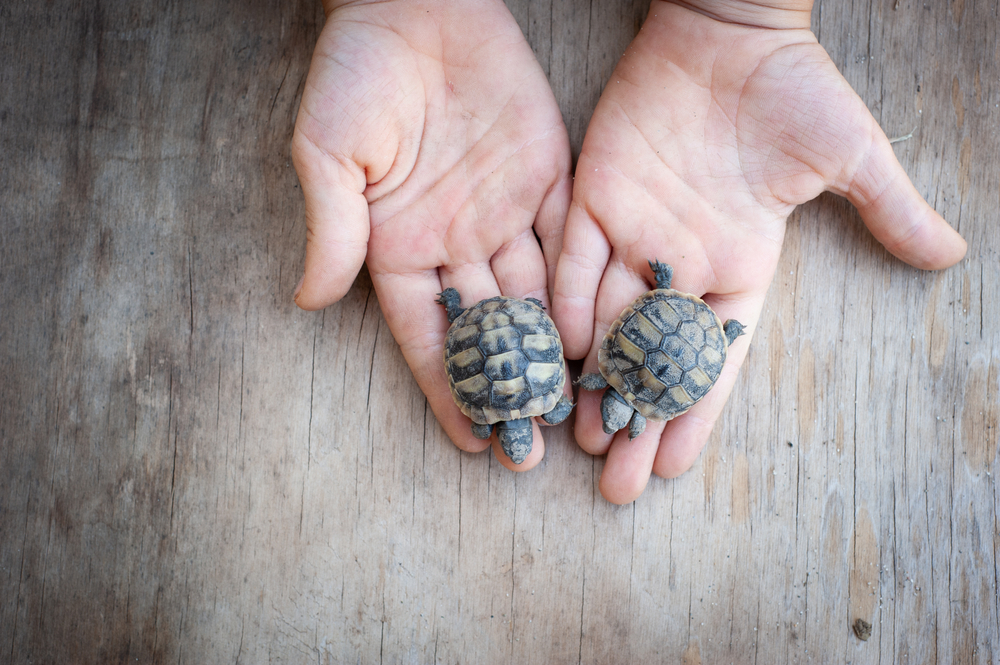
How Do I Handle a Pet Turtle or Tortoise?
Turtles can become quite tame, and most species can be handled on a regular basis. When you pick up your pet, hold them firmly but gently, close to the ground at first, to avoid injury if you lose your grip. Avoid stressing newly acquired turtles by giving them a few days to get used to their new home before handling them.
Most small- to medium-sized tortoises quickly get used to being picked up and handled. Avoid over-handling shy turtles that have retracted into their shells or aggressive, nippy pets so as not to stress them unnecessarily. Larger tortoises may become too heavy to be picked up or handled safely by children, teenagers, or the elderly.
When you're headed outside for some fun in the sun, consider taking your turtle or tortoise with you. They would adore 10 to 15 minutes of supervised playtime in the grass on a warm day. Be sure to talk with your turtle and use their name often. Some species learn to make eye contact and come when called!
Always wash your hands before and after handling any pet reptile to prevent the spread of bacteria or illness.
.jpg?h=67%25&w=100%25&hash=0BA4EBC395C6F40079112D35F8D99EEB)
Ongoing Care for Your Turtle or Tortoise
Reptiles don't need regular checkups like your dog and cat, but there are some things a basic veterinary checkup can do for a new pet reptile. Even animals bred in captivity can have parasites and pathogens. An initial screening from your reptile veterinarian can be very helpful in preventing any possible diseases and parasites from affecting your new pet. To find a local veterinarian who works with reptiles, visit www.arav.org and click “Find a Vet."
Reptiles, amphibians, and invertebrates are masters of hiding any injuries and illnesses they may have. This is an important adaptation to keep them safe from predators in the wild that prey on weak or sick animals. As important as that is in the wild, it can be frustrating for people who keep these animals as pets. Often, by the time you notice a problem or unusual behavior with your pet, their illness has progressed to the point of potential detriment.
As a caretaker, pay attention to changes in your pet's behavior; they may be sick. These can be very subtle, but most of the time, they are noticeable if you pay attention. Keeping records can help you track changes in behaviors. Keep a small notepad near your pet's habitat and note when it eats and how much, when it sheds sections of its shell or skin, uses the bathroom, the temperatures within the habitat, any habits they have, or any odd things you may notice, like sleeping more often than usual. Creating this baseline while your pet is healthy will make it easier to notice subtle differences in behavior. A sick reptile may also eat and poop less than usual or have a change in the consistency of their poop.
As your turtle or tortoise ages, you'll also notice normal changes in their health and behavior. Feel free to discuss any of these with your veterinarian.
- Claws and beaks may grow longer as your reptile becomes less active and stops naturally wearing down on items in the terrarium.
- The pigmentation (color) of your pet may fade as the years go on. This is common for many different types of animals.
- Bone and muscle mass can weaken in older reptiles. If your pet seems bonier than usual, start paying closer attention to their diet.
- Watch for slower reflexes and generally sluggish behavior.
- As reptiles age, they tend to bask more often.
- The pet's appetite may decrease.
Turtles and tortoises make amazing pets. They're generally easy to handle, develop unique personalities, can learn their name, and enjoy human interaction. We hope you'll fall in love with these reptile pets as much as we have at Zilla! Why? Turtles and tortoises are... tort-ally awesome!

